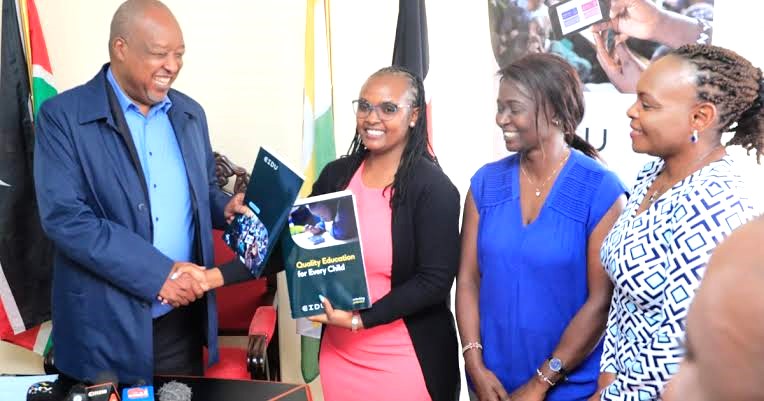Aviation encompasses the science and practice of flight in heavier-than-air craft, including airplanes, gliders, and helicopters. Operational aviation features in three classes: Military aviation, commercial aviation, and general aviation.
Military aviation includes all forms of flying by the armed forces: strategic, tactical and logistical. Commercial aviation focuses on the operation of scheduled and charter airlines. While general aviation touches all other forms of flying such as instructional flying, crop-spraying by air, flying for sport, private flying and transportation in the business-owned airplanes, usually known as executive aircraft.
Who is a Pilot?
It is right to write that a pilot is a person who flies aircrafts, which include aeroplanes, helicopters, jets, floaters, space shuttles and spaceships. When you are a pilot, you become responsible for the safety of the airplane, passengers on-board, crew and any cargo carried. A pilot should have thorough knowledge of air navigation, meteorological reports and sophisticated electronic, mechanical controls.
ALSO READ;
Six Kakamega High students earn spots in Kenya U-17 National Team
Qualification to Be a Pilot
In order to qualify as a pilot, one must be in good health. One has to go through medical examination before joining a flying school. Medical conditions such as asthma, poor eye-sight or colour blindness — can dent the work of a pilot. Therefore, they can foil one’s attempt.
Oodles of Opportunities to Diversify
Somewhat, pilots also have the opportunity of diversifying and working in different positions even while still flying aircraft. Such positions include: Cargo operation, passenger services, news reporting, remote flying, charter operations, aerial photography and wildlife services. Pilots can also work as pilot instructors, owners of flying schools and air traffic controllers.
History of Flight in Kenya and Beyond
A brief history of flight brings Wright Brothers to our mortal minds. They came out as the fathers of modern air travel. They made the first sustained, controlled, powered heavier-than-air manned flight, which is the base of modern day aircraft. This was in North Carolina USA on 17 December 1903. They made plenty of progress in the field of aerodynamics. As they tried to solve the problems of power and control that earlier models of planes encountered.
Again, more advancement and mass production of planes occurred during the Second World War (1939-1945). This was because all the counties involved in the war wanted to be a step ahead in airplane weapon delivery and air tactics. Consequently, Cold War (1945-1991) fueled air travel developments. For there were more space missions.
Actually, in Kenya, flying started during the First World War (1914-1918) when Kenya was used as a base by the British and its allies. The maiden Kenya Air Force pilots graduated from Flying School in 1965. The first President, Mzee Jomo Kenyatta, attended the colourful ceremony. Making history on that day as the first Kenyan indigenous pilots were: James Mukirae, David Kanagi, Fredrick Omondi, Hannington Apudo and Dedan Gichuru. Heretofore, the school has remained the predominant producer of pilots for the Kenya Air Force.
How Students Become Future Pilots
For a student to be a pilot in future, it is important to attain peak performance in the examinable subjects. Then, it is important to pay meticulous attention to languages (English and Kiswahili), Mathematics, Geography or Aviation Technology and Physics. Ideally, the four subjects act as key requirements in the cluster of pilot as a course. Aviation Technology is also a subject in some secondary schools such as Mang’u High School.
Areas of Specialisation in Aviation
In order to qualify to fly planes, it is necessary to have requisite licenses. Anyone who yearns to be a pilot can undergo training in any accredited flying school. Areas of specialisation include: Military pilot, commercial pilot, ferry pilot, medical and air ambulance pilot, banner towing pilot, fire-fighting pilot, helicopter pilot, cargo pilot, flight instructors, government service pilot, agricultural pilot, law enforcement pilot.
Certification and Licencing of Pilots
The first requirement is a Student Pilot License. This allows the student to start taking flight training. It is obtained from the Kenya Civil Aviation Authority (KCAA). The first qualification is a Private Pilot License (PPL). It takes about 3 months to complete. There is the ground school where one takes courses such as technical, metrological, radio-telephony and navigation.
ALSO READ;
Treasury CS Mbadi misses key senate session on JSS teacher confirmation crisis
Flight Hours Part of Training
There are practical flying lessons. The Kenyan requirement to qualify for PPL is 50 flying hours. It takes 4-6 months to complete the training. After acquiring PPL, you can advance to the Commercial Pilot License (CPL), which allows the pilot to carry fare-paying passengers. To get CPL, the Kenyan requirement is 250 flying hours. Apparently, it takes 8-10 months to complete the training. There is the granting of licenses for certain classes and types of airplanes. For instance, all pilots must have ratings for the class of plane they can fly — such as single engine, multi-engine, or seaplane — and for the specific type of plane. The Kenya Civil Aviation Authority awards and approves both PPL and CPL on successful completion of required training and passing of examination.
The training content focuses on flight introduction, basic air traffic control, flight instrumentation, radio communication, geography and map reading, practical dual and solo flights. The cost of training depends on the certification sought and the training institution.
Necessary Skills for Pilots
In a larger sense, a good pilot should have good flying skills and high degree of proficiency. Good judgement and decision-making skills makes a successful pilot. Then, a pilot should have the ability to take calculated risks in cases of crises. Focus and excellent education in aviation and time management skills are key.
ALSO READ;
Treasury CS Mbadi misses key senate session on JSS teacher confirmation crisis
Rate of Emolument and Ranks
Salary and remuneration of pilots depend on ranks, which start from a Cadet Officer — a training Pilot Student not paid anything. Then, one graduates from flight school as a second officer who is paid by airlines, as s/he is trained to fly a specific type of aircraft. After this stage, a person graduates to First Officer — a regular flying role and assistant to the commanding pilot, the Captain, which is the highest rank in an aircraft. The pay augments as one scales some ranks.
It is instructive to note. That the Captain is not the last rank in an airline. After acquiring cache of experience, one can become an instructing Captain, who flies with less experienced pilots to make them learn the ropes. After this, one can become the chief pilot of an airline or head of flight operation.
More Professionals in Aviation Sector
As postscript, Careerpedia Volumes 1 and 2 say that alongside pilots, we have other professionals worth mentioning. There are flight attendants also known as air steward or stewardess or air host or hostess. They act as the link between an airline and passengers. They are airlines image, who welcome passengers on board and ensure that they secure comfort. They also demonstrate safety procedures to the passengers before take-off. During the flight, they serve meals and refreshments. They should be ready to work during odd hours — away from home and country. A diploma in the International Air Travel Association (IATA) gives an in-depth understanding of airlines operation and customer service. A flight attendant should have fair physical appearance, confident, self-motivated; with excellent communication skills. The height of a flight attendant should be 5 ft. and 4 inches.
Travel agents take reservations and sell tickets. They conduct airline booking and ticketing for clients wishing to travel locally or internationally. They also answer enquiries concerning flight schedules and fares. They write tickets and handle payments. They also advise clients on visa requirements, travel restrictions and destinations. In order to be a travel agent, you should enroll for a diploma in a college that offers International Air Transport Association (IATA) or Universal Federation of Travel Agents Association (UFTAA). Finally, there is also an aeronautical officer, who updates the pilot on the state of the runway. Then, aerodrome air traffic controller, who is positioned at the control aircraft landing and taking off.
By Victor Ochieng’
The writer is a career educator. He guides students on how to make informed career choices. vochieng.90@gmail.com. 0704420232
You can also follow our social media pages on Twitter: Education News KE and Facebook: Education News Newspaper for timely updates.
>>> Click here to stay up-to-date with trending regional stories
>>> Click here to read more informed opinions on the country’s education landscape






